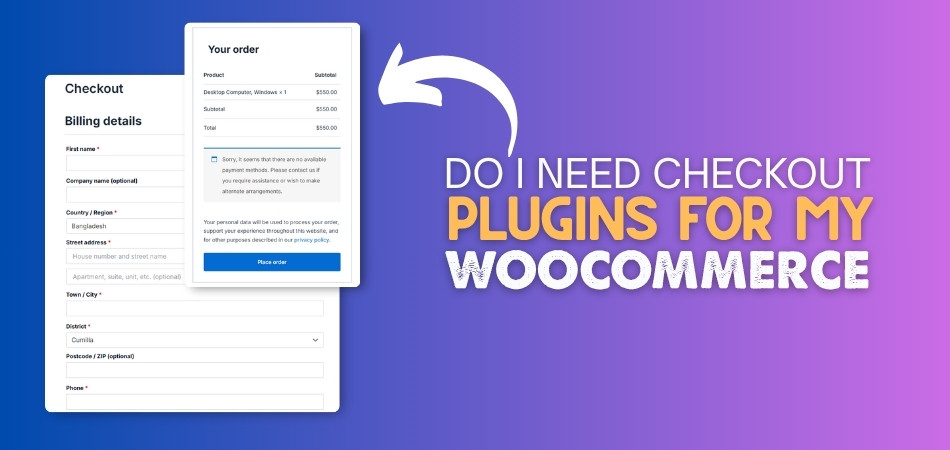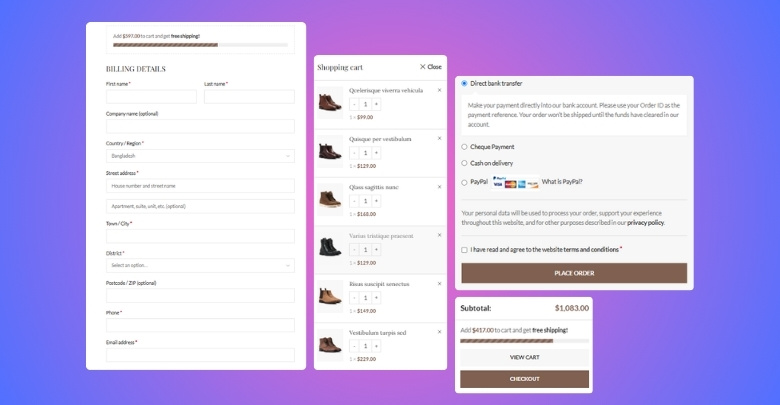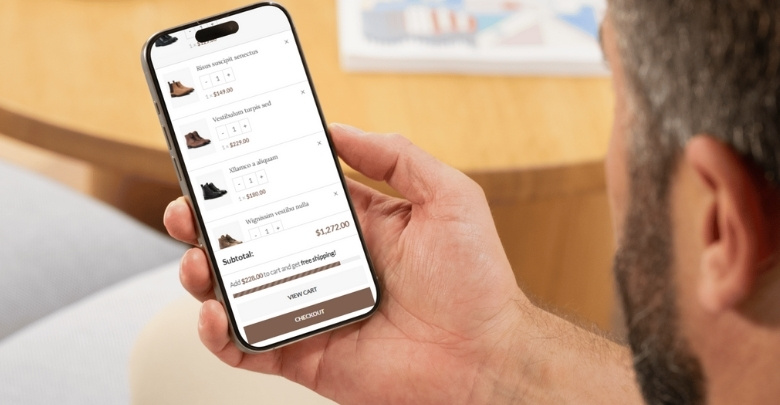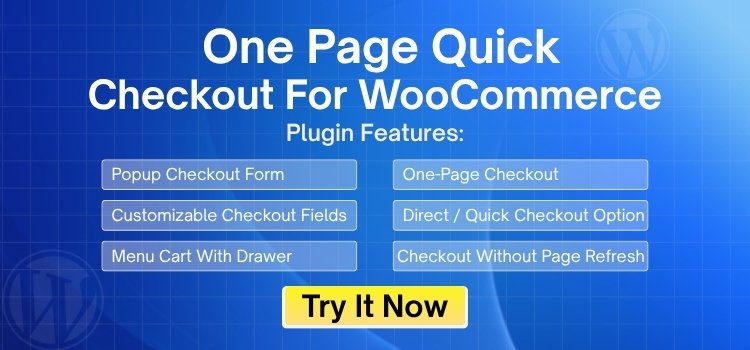Checkout plugins for WooCommerce can make a big difference in how smoothly your online store runs. They help improve the way customers buy from your site by making the checkout process faster and simpler. If you’re managing a store, you might have this in mind: Do I need checkout plugins for my WooCommerce?
You need checkout plugins for your WooCommerce store when the default checkout is not enough to meet your store’s needs. These plugins help improve speed, add trust badges, support mobile checkout, offer one-page checkout, and let you customize form fields. They also create a faster and more user-friendly shopping experience that matches what modern customers expect from online stores.
Are you curious to know when checkout plugins are actually needed? Or wondering which features really help your store? The following article will give you everything you need to know about using checkout plugins with WooCommerce.
Do I Need Checkout Plugins for My WooCommerce?
If you have a WooCommerce store, you might wonder if checkout plugins are necessary. It can be a little confusing because WooCommerce already has a built-in checkout. But sometimes, that’s not enough. It depends on your store and what your customers expect. Here’s when it’s best to use WooCommerce checkout plugins:

Better Checkout Experience
The basic WooCommerce checkout works fine, but it’s very plain. Checkout plugins can help you make the process quicker and easier for your customers. Some plugins let shoppers skip steps or fill in their info faster. That means fewer people get bored and leave the page. A better experience often leads to more completed sales.
Boosts Customer Trust
People are more likely to buy if they feel safe. Some checkout plugins let you add trust badges, money-back promises, or secure payment signs. These little things can make a big difference. When your checkout page looks secure and friendly, people feel better about placing their order. Trust leads to more completed purchases.
One-Page Checkout
Many people don’t like going through several pages just to pay. Some checkout plugins let you keep everything on one page. Using WooCommerce one page checkout, you can combine the cart and payment steps into one smooth screen. When things are fast and smooth, customers are less likely to give up halfway. That’s a big help for busy stores.
Faster Page Loading
Checkout plugins often use smart tools like AJAX, which means the page doesn’t need to reload every time something changes. This makes things feel super fast. For example, if a customer changes the quantity, the price updates right away. Fast pages keep people happy. Nobody likes waiting for a spinning wheel to finish.
Custom Checkout Fields
Some stores need to collect extra info, like delivery notes or gift messages. Plugins let you add custom fields to your checkout page. That way, you get exactly the info you need from your buyers. It also makes things clearer for your customers. A custom setup feels more professional and helpful.
Mobile-Friendly Checkout
Lots of people shop on their phones now. If your checkout isn’t easy to use on a small screen, they might quit. Many checkout plugins are made to work better on phones and tablets. They resize properly, load fast, and are simple to tap through. This helps you keep more mobile shoppers happy.
Common Limitations of WooCommerce’s Built-in Checkout
WooCommerce gives you a working checkout system right from the start, which is great for getting started. But as your store grows, you may notice some things missing or not working the way you want. These limits can slow things down or confuse buyers. Let’s look at some common issues that many store owners run into with the built-in checkout.
No Built-in Upsell Option
The default WooCommerce checkout doesn’t let you easily suggest extra products during checkout. You can’t show a small “add this too” box to increase the order size. This is a missed chance to make more sales without extra work. Many stores use upsells to increase profits. Without this, you’re leaving money on the table.
Lack of Design Control
You can’t fully control how the default checkout looks. It may not match the rest of your site’s style or branding. Changing colors, layout, or fonts often needs coding. That can be tricky and time-consuming. A checkout that looks and feels like your store builds more trust.
No Built-In Analytics
WooCommerce doesn’t give clear details on what’s happening at checkout. You won’t know where customers drop off or why they leave. This makes it hard to fix problems or improve the flow. Good data helps you make better choices. Without it, you’re guessing.
Doesn’t Support Multi-Step Layout
Some stores want a step-by-step layout for checkout. It helps keep things clean by showing one section at a time, like shipping first, then payment. WooCommerce doesn’t have this option by default. All the fields are shown at once, which can feel messy or overwhelming. A multi-step layout can feel more organized and easier to follow.
Limited Support for Subscriptions
If your store sells things like monthly boxes or repeat orders, WooCommerce alone can’t handle it well. The default checkout isn’t made for subscription payments. You’ll need extra tools or plugins to make this work. Without those, customers can’t manage repeat purchases easily.
No Built-In Checkout Testing
You can’t easily test how the checkout works before going live. If something breaks, you may not know until a real customer reports it. This can hurt trust and sales. A built-in testing tool would help catch issues early. But WooCommerce doesn’t offer that out of the box.
Do Shoppers Prefer One Page or Multi-Step Checkout?
Most shoppers want checkout to be simple and quick. That’s why online stores often use either a one-page or a multi-step checkout. Both have their own fans and benefits. Let’s compare both styles side by side to see which one shoppers like more:
| Aspect | One Page Checkout | Multi-Step Checkout |
| Speed | Fast and saves time | Slower due to extra pages |
| Ease of Use | Everything in one place | Easier to focus on one step at a time |
| Mobile Friendliness | Can feel crowded on small screens | Often better spaced for mobile |
| Abandonment Rate | Lower, since it’s quick | Higher if steps are too many |
| Load Time | May take longer to load fully | Loads faster, one step at a time |
| User Focus | Can feel overwhelming with too many fields | Helps users focus by splitting tasks |
| Flexibility | Less flexible for complex checkouts | Better for stores with extra options |
| Design Simplicity | Clean but can get cluttered | Looks clean with fewer fields per page |
| Conversion Rate | High for simple products | High for complex or multi-option purchases |
| Set-Up Time | Faster to set up for most stores | Takes more time and setup steps |
Both one page and multi-step checkouts have their pros and cons. If you’re considering a faster checkout process, understanding one page checkout clearly can help you decide which flow works best for your store.
What to Look for in a Good WooCommerce Checkout Plugin?
Choosing the right checkout plugin for your WooCommerce store can make a big difference. Some plugins are full of helpful tools, while others miss key features. You need to know what really matters before picking one. Let’s go through the main things to check before making a choice.

Easy Setup
A good plugin should be simple to install and use. You shouldn’t need to know any coding or spend hours setting it up. The steps should be clear, with helpful instructions. If it’s too hard to use, it’s probably not the right one. Easy setup saves time and avoids frustration.
Fast Loading Speed
Checkout pages need to load quickly, or people might leave. A plugin that slows things down can hurt your sales. Always look for plugins that are built to be light and fast. You can test the speed after installing it. A faster checkout means happier shoppers.
Mobile Friendly
More people shop on their phones than on computers. A good plugin should look and work great on any screen size. Buttons, forms, and text should all be easy to tap and read. If a plugin doesn’t work well on mobile, it’s not worth using. Mobile-friendly design is a must.
Custom Field Options
Sometimes you need extra fields in your checkout, like gift notes or delivery instructions. A good plugin lets you add or remove fields as needed. You should be able to change labels and organize them easily. This helps you collect the right info from your customers. More control means a better checkout experience.
Multiple Payment Options
People like to choose how they pay, whether it’s by card, PayPal, or a digital wallet. A great plugin should support many payment types. It should also work well with the payment methods you already use. If a plugin only supports a few options, it might not be enough. More choices make checkout easier for everyone.
Cart Recovery Tools
Sometimes customers leave without finishing their orders. A good plugin will help bring them back. Look for tools like email reminders or discount popups. These features can help you recover sales you might’ve lost. Even simple tools can make a big difference.
What Happens If a Checkout Plugin Breaks?
Checkout plugins are helpful, but sometimes they can stop working the way they should. This can happen after updates or when they clash with other plugins or themes. When this happens, it can cause problems for your store. Take a look at what can go wrong and what you need to be aware of.
Failed Payments
One big issue is that payments might not go through. Customers could try to pay and get stuck or see error messages. This means lost sales and frustrated buyers. Even if just one part of the payment fails, the whole order won’t work. It’s something store owners need to fix fast.
Broken Checkout Page
The entire checkout page might stop loading or show up incorrectly. Buttons might disappear, or forms might not work. This makes it impossible for customers to complete their purchase. Many of them won’t come back later. A broken checkout page can hurt your business a lot.
Wrong Order Details
Sometimes the plugin may send incorrect information. A customer might order one thing, but the system records another. Shipping addresses could also get mixed up. These kinds of mistakes create confusion and lead to complaints. Fixing them takes time and effort.
Missing Payment Options
If the plugin breaks, certain payment methods might vanish from the page. For example, someone may want to use PayPal, but it doesn’t show up anymore. This can lead to people quitting right before paying. When buyers can’t pay the way they want, you lose sales.
Slow Loading Times
A broken or buggy plugin can make the checkout page load very slowly. This can annoy customers or make them think the site isn’t working. Many users won’t wait around for a slow page. Even a few seconds of delay can lead to fewer sales.
Plugin Conflicts
Sometimes a checkout plugin doesn’t work well with another plugin or your theme. This can cause random bugs and strange behavior. You might not notice right away, but customers will. These conflicts can break important features until they are fixed.
Simple Tweaks That Improve Checkout Completion Rates
A few small changes to your checkout page can make a big difference in how many people finish their orders. These tweaks are easy to apply but often go unnoticed. Fixing them can help more customers complete their purchase. Scroll down to see what simple things you can do to improve your checkout success.

Remove Extra Fields
Too many form fields can make the checkout feel long and boring. Only ask for what you truly need, like name, email, and address. A big part of optimizing WooCommerce checkout is removing anything that slows customers down or makes them think too much. Shoppers don’t want to fill out things that don’t matter. Keep it short and simple.
Show Progress Steps
It helps when customers know how many steps are left. A simple progress bar or step tracker keeps them from feeling lost. They can see where they are and what’s next. This makes the process feel shorter. People are more likely to finish when they know they’re almost done.
Offer Guest Checkout
Not everyone wants to make an account before buying. Some just want to place an order and leave. Guest checkout lets them do that easily. Forcing sign-ups can scare people away. A guest option keeps things fast and easy.
Clear Error Messages
Sometimes users make mistakes while filling out forms. If the error message isn’t clear, they won’t know what to fix. Use simple and helpful messages like “Please enter your full name.” This keeps things moving smoothly. Good messages help users stay on track. Improving how errors are handled is one of the technical reasons to customize WooCommerce checkout page behavior to make the experience more user-friendly.
Use Autofill Features
Autofill lets shoppers enter their info quickly. Most phones and browsers can remember names, addresses, and payment details. Make sure your checkout supports these tools. This saves time and effort for your customers. A faster process means fewer people leave before finishing.
Add Trust Badges
People want to know that their payment is safe. Showing trust badges, like “secure checkout” or payment logos, can help. It makes buyers feel better about entering their details. Even a small sign of safety can boost trust. More trust means more completed orders.
Commonly Asked Questions
If you’re still unsure about how checkout plugins work or whether they’re the right fit for your WooCommerce store, this FAQ section is here to help. Below are common questions that many store owners have, with simple, detailed answers to guide you.
Can I Track Checkout Behavior With Plugins?
Some advanced plugins offer tracking tools that show how customers move through the checkout page. You can see where people stop or what fields they skip. This helps you fix problem areas and improve the overall checkout process.
How Do Checkout Plugins Affect Store Performance?
Checkout plugins can affect how fast or slow your site runs, especially if the plugin is heavy or poorly coded. A well-built plugin should not slow down your store. Always check reviews, test speed after installing, and keep only necessary plugins active.
Can I Use More Than One Checkout Plugin?
It’s possible to use more than one checkout plugin, but it’s not always a good idea. Plugins can conflict with each other, causing bugs or errors. It’s best to use one reliable plugin that has all the features you need instead of combining several.
Are Free Checkout Plugins Safe to Use?
Free checkout plugins can be safe if they are downloaded from trusted sources like the official WordPress plugin store. Always check for recent updates, good user ratings, and developer support. Avoid unknown sources, as poorly coded plugins can create security risks.
Do Checkout Plugins Work With All WooCommerce Themes?
Most checkout plugins are designed to work with many WooCommerce themes, but some themes may need small adjustments. It’s smart to test the plugin on your site before fully launching it. Always use themes and plugins that follow WooCommerce coding standards.
How Often Should I Update My Checkout Plugin?
You should keep your checkout plugin updated as often as new versions come out. Updates fix bugs, add features, and improve security. Before updating, back up your site and test it on a staging copy if possible. Regular updates keep things running smoothly.
Do Checkout Plugins Work With Digital Products?
Yes, checkout plugins work for both physical and digital products. In fact, they can make digital delivery smoother by removing shipping fields. Some also support instant download links or license keys, depending on the type of product you sell.
Bottom Line
Checkout is the final step that decides whether someone becomes a customer or not. Even the smallest issue on that page can cause someone to give up and leave. That’s why having the right tools in place really matters for any online store.
If you’ve ever asked yourself, do I need checkout plugins for my WooCommerce store, the answer depends on what kind of experience you want to give your customers. These plugins are not just nice extras — they can fix problems, add features, and make the checkout process smoother and faster.
The good news is that you don’t need to do everything at once. Start small, try what fits your store best, and keep improving. A better checkout means happier customers and more completed orders.
